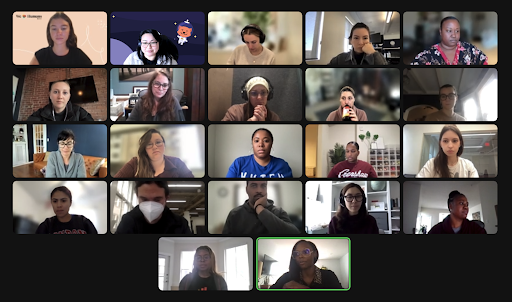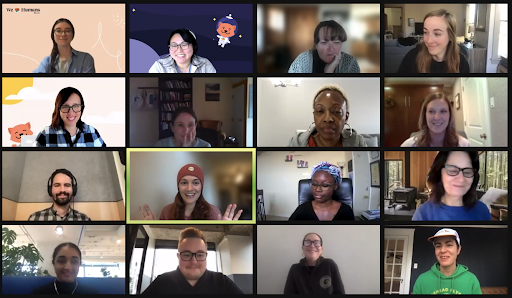Trustworthiness, adaptability, and leadership — just a few of the qualities HR teams should possess. Consider adding “marketing savvy” to that list.
“Employer branding” refers to your company’s reputation among employees and potential candidates. Companies with great employer brands have vibrant cultures, engaged employees, and no trouble attracting top candidates. Those with bad employer brands end up in the headlines.
So who better to advise on branding than actual marketers? We asked marketing leaders to put themselves in HR’s shoes. What would they do to put their company’s best foot forward?
1. Embrace content in all its forms.
Content marketing is the fastest-growing marketing discipline. But storytelling isn’t just a means of building loyalty among prospects and customers. When used by HR teams, content can be used to spotlight employees, company culture, and social responsibility.
“You need to build a content-driven brand strategy. Conduct employee interviews and showcase them on social media. Create a brand story video that celebrates people inside the organization and the impact your brand makes in the world,” said Siddhartha Gupta, CEO at Mercer | Mett. Embracing a variety of mediums, including blog posts, videos, and even podcasts can give your employer branding efforts added reach.
Other marketers recommended focusing on individual stories for maximum effect. “Real-life stories are the way to go when marketers want to build a human connection with their audience,” said Yaniv Masjedi, Chief Marketing Officer at Nextiva. “Don’t shy away from the more sentimental stories, especially those involving a deep connection with your organization, like how employees might see the company as a second home.”
While you should always prioritize quality, most content marketers will tell you that quantity does still matter. “The most important way to build an employer brand is to have a consistent digital footprint. That means posting regularly. It could be anything from team building activities to a 'day in the life' series. Stay active and display your ongoing growth,” said Mark Hayes, Head of Marketing at Kintell. If there’s a gap in your employer branding content, it can signal that something’s wrong on the inside — potentially turning candidates away, Hayes said.
2. Don’t “ghost” job candidates.
Employer branding isn’t just about how you treat current employees — job applicants should be treated with just as much respect. As any marketing leader will tell you, one-on-one interactions can either delight “customers” or turn them away. Be professional and strive to make every candidate interaction, even rejections, courteous and timely. Above all, don’t leave them hanging.
“One of the best, yet most overlooked ways to improve employer brand is to not insult job candidates by ghosting them. Few HR departments consider that, while they are judging applicants, the applicants are judging them back — often harshly,” said Sharon Geltner, founder of Froogle PR, a multimedia agency.
Remember, Glassdoor isn’t just a site for employees — candidates are also encouraged to review your interview process. “If the job is filled, then say so promptly. If interviews are requested and the candidate doesn't make the final cut, consider how much effort they put into the process and personalize the response a bit. Job candidates have long memories,” Geltner said.
3. Take a stance on social issues.
The events of the last year have called into question the authenticity of brands’ responses to issues like police brutality and prejudice. But when the message rings true and companies take action, brand activism can have a powerful impact on your reputation as an employer.
“It’s inappropriate now for your content to appear tone-deaf,” said Paige Arnof-Fenn, CEO Mavens & Moguls, a marketing consultancy. “Employees and customers will remember who treated them well during this crisis and they will be rewarded with loyalty for earning that trust during the bad times.”
In addition to demonstrating your allyship to potential candidates, you’re also sending a powerful message to current employees. In fact, over 75% millennial workers say they expect their employers to take a stand on issues like equal rights, immigration, and climate change. HR teams should partner with leadership to draft messaging that their team can stand by.
4. Maintain a presence on social media.
The importance of social media is marketing 101. But that doesn’t mean tools like Twitter, Facebook, and LinkedIn are only meant for attracting prospects. Marketing experts recommended using these tools to advertise openings, celebrate employee anniversaries, and highlight cultural initiatives.
“Being invisible online is just a terrible strategy. It’s so important to establish an authentic brand voice on social media,” Arnof-Fenn said. If your brand voice is quirky, don’t let your employer brand posts seem uncharacteristically wooden or professional. “Your online presence is an extension of your brand so it has to align with other brand messaging and be consistent.”
5. Leverage referral marketing.
It’s not uncommon for companies to lean on client referrals to close new business. Why not adopt a similar strategy for HR and recruiting? Turn your employees into advocates by equipping them with sample social language and implementing a candidate referral program. If you’re in the running for a best-place-to-work award, encourage team members to share their positive experiences.
“This is the decade of referral marketing. That’s why tools like Yelp have exploded the way they have. Let your employees do the talking,” said Rishav Khanal, cofounder of InPerson. “Put your employees at the front of your talent marketing and let them build relationships with candidates, and be the conduit for attracting the best and brightest.”
Remember that referral marketing tactics don’t stop at the interview. Some companies even opt to leverage engaged employees in later stages, sending them in as “closers” to win top candidates over.
—
For additional tips on building a vibrant company culture and lasting employer brand, subscribe to the weekly I ♡ Humans newsletter.







